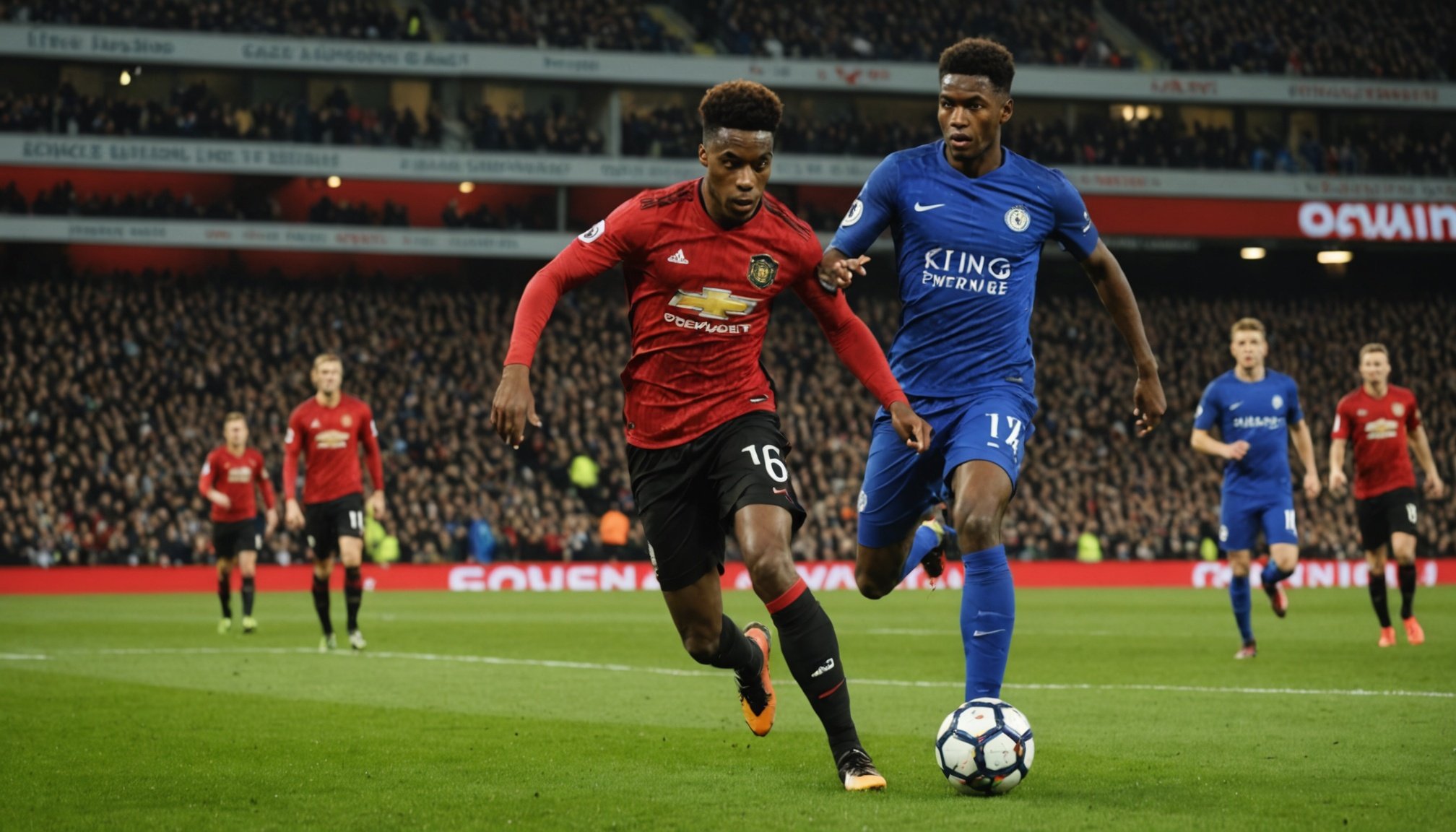Unlocking Athletic Excellence: Harnessing Machine Learning to Predict Future Football Stars
In the fast-paced and highly competitive world of football, identifying and nurturing future stars is a daunting task. However, with the advent of machine learning and advanced data analytics, teams and coaches are now better equipped than ever to predict player performance, prevent injuries, and optimize training programs. Here’s a deep dive into how machine learning is revolutionizing the sports industry, particularly in football.
The Power of Data in Football
Data has become the lifeblood of modern sports, and football is no exception. The integration of data analytics into football has transformed how teams approach player health, performance, and strategy.
Topic to read : Boosting Player Commitment: Cutting-Edge Contract Strategies for Football Clubs
Leveraging Key Statistics
Machine learning models can predict football players’ market values by analyzing key statistics such as minutes played, goals scored, age, and position. For instance, a Streamlit app demonstrated how machine learning can highlight overvalued and undervalued players based on actual versus predicted values, providing valuable insights for coaches and scouts[1].
Real-Time Data Analysis
The use of wearable technology and GPS devices has become commonplace in professional football. These devices track players’ movements, heart rates, and exertion levels, providing real-time data that can be correlated with historical injury data to predict potential injuries before they occur. Teams like the San Francisco 49ers and the New England Patriots have heavily invested in these technologies to monitor player health more closely and make data-driven decisions regarding training loads and recovery protocols[3].
Additional reading : Unleashing Fan Passion: Innovative CRM Tactics Transforming Football Club Engagement
Predicting Player Performance
Predicting how well a player will perform is a complex task, but machine learning algorithms are making it more feasible.
Feature Engineering
To predict player performance, machine learning models rely on a set of carefully engineered features. For example, when predicting the winner of the NFL season, features such as Expected Points Added (EPA), Red Zone Efficiency, Strength of Schedule (SOS), and Point Differential are crucial. These metrics capture key aspects of team performance, such as efficiency, consistency, and competitiveness[4].
Machine Learning Models
Different machine learning models can be used to predict player performance. For instance, a study on predicting noncontact injuries in professional football used Support Vector Machines (SVMs), Feedforward Neural Networks (FNNs), and Adaptive Boosting (AdaBoost). The SVMs with cost-sensitive learning showed high accuracy in detecting injury events, achieving a sensitivity of 71.43% and specificity of 74.19%[2].
Injury Prevention and Management
Injury prevention is a critical aspect of maintaining player performance and overall team success.
Advanced Imaging and Wearable Technology
Advanced imaging techniques such as MRI and ultrasound, combined with wearable technology, allow medical staff to assess players’ physical conditions with unprecedented accuracy. These tools can detect underlying issues that may not yet be symptomatic but could lead to injuries if left unaddressed. For example, AI algorithms can analyze historical data to identify patterns that human analysts might overlook, providing insights into which players are at higher risk for specific injuries based on their playing style, training habits, and genetic predispositions[3].
Real-Time Injury Risk Assessment
The NFL’s collaboration with Amazon Web Services (AWS) has led to the development of the Digital Athlete and the AI-Powered Tackle Probability Model. These tools use real-time data from sensors embedded in uniforms and helmets to create simulations of in-game action, helping coaches and medical staff make smarter, faster decisions about player safety and performance. AWS processes nearly 100 million data points every week, providing a comprehensive view of how various factors, including weather and fatigue, affect in-game performance and injury risks[5].
Enhancing Training Programs
Machine learning is not just about predicting performance or preventing injuries; it also plays a crucial role in optimizing training programs.
Data-Driven Decision Making
By analyzing vast amounts of data related to player performance, teams can develop training programs that are tailored to individual needs. For instance, the use of machine learning to predict noncontact injuries can help coaches identify high-risk players and adjust training loads accordingly. This approach ensures that players are pushed to their limits without exceeding safe thresholds, thereby optimizing their overall performance[2].
Personalized Training
Machine learning algorithms can help create personalized training programs by analyzing a player’s unique physical attributes and playing style. This personalized approach ensures that each player receives the most effective training, leading to improved performance and reduced injury risk. For example, the Digital Athlete uses AI and machine learning to create a 360-degree view of a player’s health, performance, and injury risk, enabling coaches to make data-driven decisions about training programs[5].
Fan Engagement and the Sports Industry
The impact of machine learning extends beyond the field, influencing fan engagement and the broader sports industry.
Big Data Analytics
The sports industry is leveraging big data analytics to enhance fan engagement. By analyzing large volumes of data, teams can gain insights into fan behavior, preferences, and demographics. This information can be used to improve the fan experience, from personalized marketing to enhanced stadium amenities. For instance, the use of IoT devices and virtual reality can simulate hazardous scenarios, allowing fans to engage more deeply with the game[3].
Sports Equipment and Technology
The integration of technology into sports equipment is another area where machine learning is making a significant impact. From smart footballs that track player performance to advanced sports analytics platforms, technology is enhancing the game in multiple ways. For example, sensors in helmets can track player safety metrics, providing real-time data that can be used to prevent injuries and improve overall player performance[5].
Practical Insights and Actionable Advice
For teams and coaches looking to harness the power of machine learning, here are some practical insights and actionable advice:
Invest in Wearable Technology
Investing in wearable technology such as GPS devices and heart rate monitors can provide valuable real-time data on player performance and health. This data can be used to make data-driven decisions about training programs and injury prevention.
Use Machine Learning Models
Implement machine learning models to predict player performance and injury risk. These models can analyze historical data and real-time metrics to provide insights that human analysts might miss.
Collaborate with Medical Professionals
Collaboration between coaches, medical staff, and players is crucial for effective injury prevention and management. Machine learning models can provide the data needed to support these collaborations.
Focus on Personalized Training
Create personalized training programs based on individual player attributes and playing styles. This approach ensures that each player receives the most effective training, leading to improved performance and reduced injury risk.
Machine learning is revolutionizing the world of football by providing teams and coaches with the tools they need to predict player performance, prevent injuries, and optimize training programs. From real-time data analysis to personalized training programs, the integration of machine learning into football is enhancing the game in multiple ways.
Key Takeaways
- Data-Driven Decision Making: Machine learning enables teams to make data-driven decisions about player performance, injury prevention, and training programs.
- Real-Time Analysis: Wearable technology and GPS devices provide real-time data that can be used to predict injuries and optimize player performance.
- Personalized Training: Machine learning algorithms can create personalized training programs tailored to individual player needs.
- Fan Engagement: Big data analytics and advanced sports technology are enhancing fan engagement and the overall sports industry.
As the sports industry continues to evolve, the role of machine learning will only become more pivotal. By embracing these technologies, teams can unlock athletic excellence, ensure player safety, and drive success both on and off the field.
Table: Technologies in Injury Forecasting
| Technology | Role in Injury Forecasting |
|---|---|
| Machine Learning | Analyzes historical data to predict future injury trends |
| Big Data Analytics | Processes large volumes of injury-related data for forecasting purposes |
| IoT Devices | Provides real-time data on player activities to identify potential injury risks |
| Virtual Reality | Simulates hazardous scenarios to assess potential injury outcomes |
| Advanced Imaging | Uses MRI and ultrasound to detect underlying physical issues that could lead to injuries |
| Wearable Technology | Tracks player movements, heart rates, and exertion levels to predict injury risks |
| AI-Powered Tackle Model | Analyzes every tackle in real-time to predict injury risks |
Detailed Bullet Point List: Key Predictive Factors for Injury Risk
- Player’s Position: Different positions have different injury risks due to the nature of the role.
- Session Type: Training sessions versus game sessions have different physical demands.
- Player Load: The cumulative physical stress on a player over a period.
- Velocity and Acceleration: High-speed movements and rapid changes in direction increase injury risk.
- Historical Injury Data: Past injuries can indicate future risk.
- Genetic Predispositions: Some players may be genetically more prone to certain types of injuries.
- Training Habits: Consistency and intensity of training can impact injury risk.
- Playing Style: Aggressive or high-impact playing styles can increase injury risk.
By understanding and leveraging these predictive factors, teams can better manage injury risks and ensure the overall health and performance of their players.





